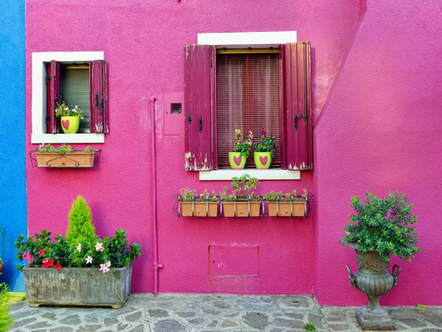Paint, paint, paint and more paint...! So how do you choose the right type and do you need to prime or undercoat? Selecting from the vast array of different formulations and finishes can be a little more than daunting when gazing at aisles and aisles of tins. However when it comes down to it, paints can be broken down into two main categories, wall and trim. We would recommend choosing your final topcoat first, then work backwards to establish if priming or undercoating is necessary, bearing in mind the current state of the surface you are painting!
Wall paints suitable for interior plaster include water-based emulsions or acrylic multi-surface paints. The standard emulsion finishes include matt, soft-sheen and silk. Matt is a flat finish, shows imperfections the least and is only gently wipeable; silk is shiny, light reflecting and is more resilient to wiping down; soft-sheen sits in-between matt and silk. Acrylic paint suitable for walls (and trim) is available in matt and eggshell finishes and provides a moisture resistant, scrubbable surface ideal for kitchens, stairwells and family rooms. Contract matt emulsion contains no vinyl and is therefore suitable for painting cured bare plaster. Anti-mould wall paints are also available to help prevent mouldy patches re-appearing. Exterior masonry paints can be oil or water-based and are designed to withstand the elements. Masonry paint is most commonly available in a smooth finish however textured masonry is also an option as its thicker formulation will cover minor cracks. Previously painted walls in good condition generally won’t need priming unless for example you are covering a dark colour or want them to be especially hardwearing.
Trim paint is generally suitable for wood and metal. The standard finishes are eggshell, satin and gloss although matt finishes are gradually being introduced. Eggshell is normally only suitable for interior use and gives the flattest finish with gloss being the shiniest. Trim paint may be water or oil-based and formulated for interior or exterior use or both. Water-based finishes are generally quick drying, low odour and will stay whiter for longer indoors in comparison to oil-based finishes. Paint especially formulated for exterior use is the most durable and will save you time and money in the long run. A new hybrid paint in gloss and satin finishes is now also available to encompass the benefits of both oil and water-based systems.
Priming and undercoating wood and metal is essential if you want to prevent the topcoat peeling, cracking or chipping. Eggshell and satin are more likely to only require priming first. A few products are self-priming so only require sufficient top coats to be applied. When purchasing primers and undercoats it is advisable to select matching products to the topcoat whenever possible. Simply, this is because modern paints are increasingly being designed as a compatible system with each layer contributing to the final finish. One final tip if you choose water-based paint is to apply it with a good quality synthetic brush. This prevents the bristles from absorbing the water in the paint, which can cause application issues and visible brush marks.
Wall paints suitable for interior plaster include water-based emulsions or acrylic multi-surface paints. The standard emulsion finishes include matt, soft-sheen and silk. Matt is a flat finish, shows imperfections the least and is only gently wipeable; silk is shiny, light reflecting and is more resilient to wiping down; soft-sheen sits in-between matt and silk. Acrylic paint suitable for walls (and trim) is available in matt and eggshell finishes and provides a moisture resistant, scrubbable surface ideal for kitchens, stairwells and family rooms. Contract matt emulsion contains no vinyl and is therefore suitable for painting cured bare plaster. Anti-mould wall paints are also available to help prevent mouldy patches re-appearing. Exterior masonry paints can be oil or water-based and are designed to withstand the elements. Masonry paint is most commonly available in a smooth finish however textured masonry is also an option as its thicker formulation will cover minor cracks. Previously painted walls in good condition generally won’t need priming unless for example you are covering a dark colour or want them to be especially hardwearing.
Trim paint is generally suitable for wood and metal. The standard finishes are eggshell, satin and gloss although matt finishes are gradually being introduced. Eggshell is normally only suitable for interior use and gives the flattest finish with gloss being the shiniest. Trim paint may be water or oil-based and formulated for interior or exterior use or both. Water-based finishes are generally quick drying, low odour and will stay whiter for longer indoors in comparison to oil-based finishes. Paint especially formulated for exterior use is the most durable and will save you time and money in the long run. A new hybrid paint in gloss and satin finishes is now also available to encompass the benefits of both oil and water-based systems.
Priming and undercoating wood and metal is essential if you want to prevent the topcoat peeling, cracking or chipping. Eggshell and satin are more likely to only require priming first. A few products are self-priming so only require sufficient top coats to be applied. When purchasing primers and undercoats it is advisable to select matching products to the topcoat whenever possible. Simply, this is because modern paints are increasingly being designed as a compatible system with each layer contributing to the final finish. One final tip if you choose water-based paint is to apply it with a good quality synthetic brush. This prevents the bristles from absorbing the water in the paint, which can cause application issues and visible brush marks.


 RSS Feed
RSS Feed
